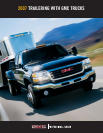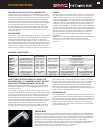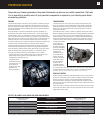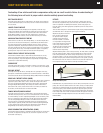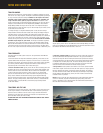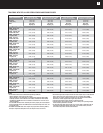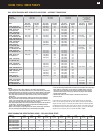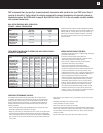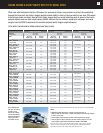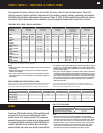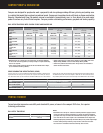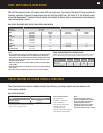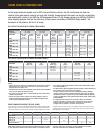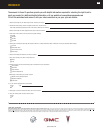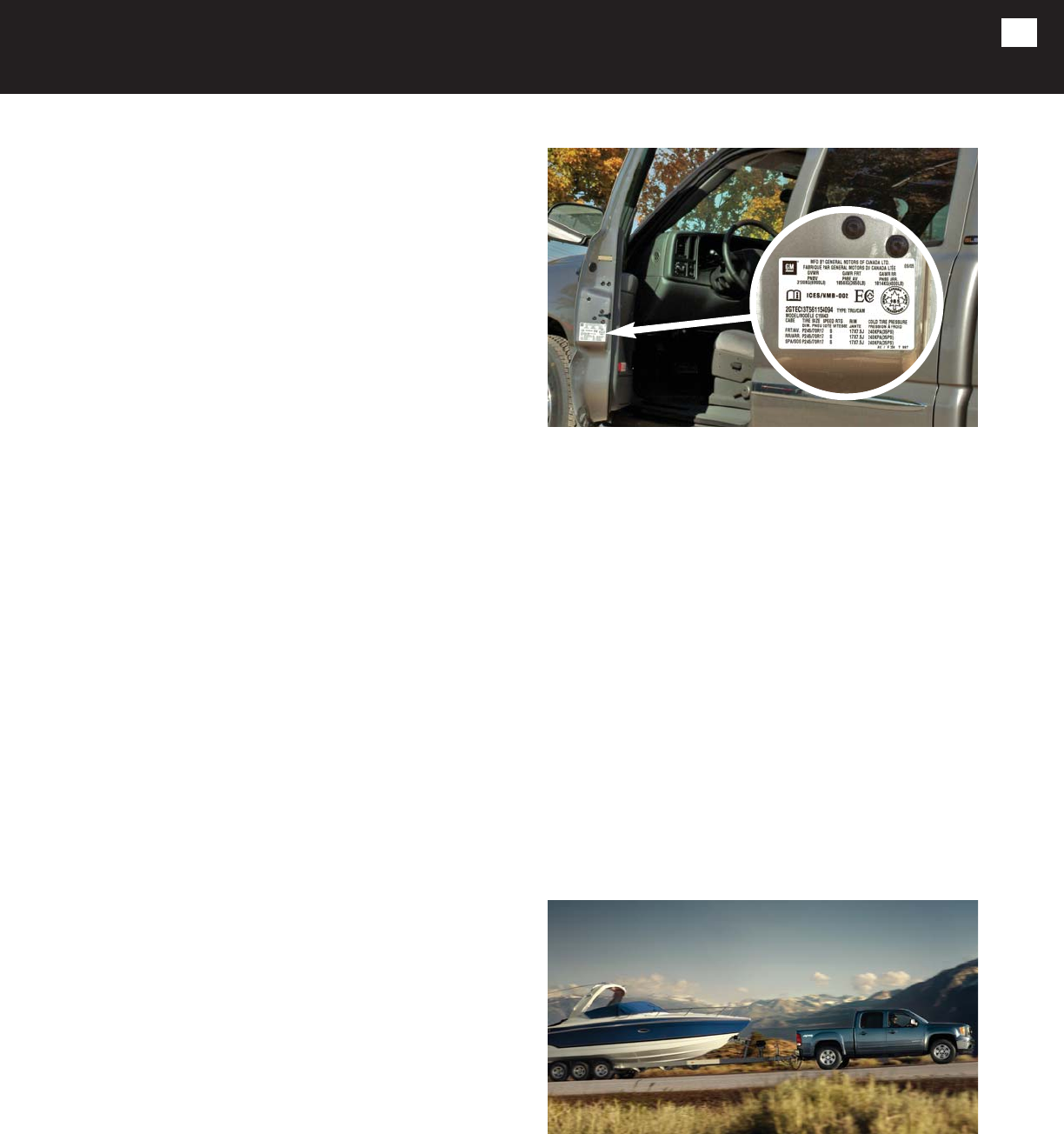
NOTES AND CONDITIONS
TRAILER BRAKES
The towing vehicle’s brake system is rated for safe operation at the GVWR and
not the GCWR.
If the loaded trailer will weigh more than 450 kg (1000 lb.), it must have its own
separate brakes when towing with a compact or mid-size truck, or a Savana Van.
The GM full-size pickups, sport-utilities and chassis cabs can haul trailers weighing
up to 907 kg (2000 lb.) without a separate trailer brake system, where local
regulations permit. Trailer brakes come in three main types:
1. Electric actuation brakes typically utilize the tow vehicle’s battery power and
the brake light circuit to trigger their function. They provide both automatic and
manual control of electric trailer brakes. Recent versions have attempted to use
a sensor in the tow vehicle’s hydraulic system in order to vary trailer brake
pressure in concert with the driver’s input. The GM full-size pickups and sport-
utility vehicles with the available Z82 Trailering Special Equipment Package
provide an under-dash provision for an Electronic Brake Controller (EBC) jumper
harness. This special wiring harness, with 4 blunt cut wires, is included with the
Trailering Package. It allows the EBC to electronically adjust brake pressure
to the trailer brakes.
2. Hydraulic actuation brakes tap into the tow vehicle’s own brake system and
are not recommended. Although brake modulation is very good, this method is
restricted to large tow vehicles with high volume master cylinders and strongly
assisted power brakes. Care must be taken to follow proper installation procedures
or complete loss of braking may result. The trailer’s brake parts must be able
to withstand 3000 pounds per square inch of pressure and not use more than
0.02 cubic inches of fluid from the tow vehicle’s master cylinder.
3. Surge brakes actuate hydraulic trailer brakes via a master cylinder mounted
in the trailer coupler. As the vehicle slows, the trailer presses (or surges) against
the hitch, operating the master cylinder and applying the brakes. Surge brakes
are ideal for marine trailers where the wheels may be submerged. Surge brakes
present problems when backing up, as they will lock on unless some manually
actuated override is provided.
NOTE: Be sure to read and follow the instructions for the trailer brake controller
so that it is installed, adjusted and maintained properly. Many jurisdictions
require a “breakaway” device which activates the trailer brakes automatically in
the event the trailer becomes detached.
TRAILERING AND THE LAW
Trailering laws vary from place to place. A set-up that’s legal in one province may
not be legal in another, or in an American state. In some locations, you may be
required to have a commercial driver’s licence. It pays to check ahead when
planning a trip to ensure your trailering rig meets the local requirements in all
provinces and/or states you will be visiting.
BE SURE AND READ THE TRAILERING INFORMATION FOUND IN YOUR VEHICLE
OWNER’S MANUAL.
Maximum trailer ratings are calculated based on a properly equipped tow vehicle
with a driver as its only occupant. The weight of additional equipment, passengers
or cargo will reduce the trailer rating. In addition to the weight of the trailer,
maximum trailer weight includes the weight of passengers, equipment and
cargo in the tow vehicle, plus any cargo on the trailer. The addition of the
trailer’s tongue weight (or fifth-wheel kingpin weight) must not cause the vehicle
weights to exceed the Rear Gross Axle Weight Rating (RGAWR) or Gross Vehicle
Weight Rating (GVWR). The tongue load of any trailer is an important weight to
measure because it affects the total or gross vehicle weight of your vehicle as well
as the front and rear axle loads.
If a weight-carrying or a weight-distributing hitch is used, the trailer tongue
weight should be 10-15% of the total loaded trailer weight. The kingpin weight of
fifth-wheel trailers is typically 15-25% of the loaded trailer weight. After you’ve
loaded your trailer, weigh the trailer and then the tongue separately on a commercial
scale to see if the weights are accurate. If they are not, some adjustment can be
made by moving some cargo fore or aft in the trailer. Do not exceed the maximum
allowable tongue weight for your vehicle. The weight of additional equipment,
passengers or cargo in the tow vehicle will reduce the allowable tongue weight.
Refer to the Owner’s Manual for additional information. A Certification/Tire label
can be found on the rear edge of the vehicle’s driver-side door. The label shows
the size of the original tires and the inflation pressures needed to obtain the gross
TRAILER LOADING
weight capacity of the vehicle. The GVWR (Gross Vehicle Weight Rating) and both
front and rear GAWRs (Gross Axle Weight Ratings) are also indicated. Never exceed
the GVWR, or the GAWR for either the front or rear axle.
5



